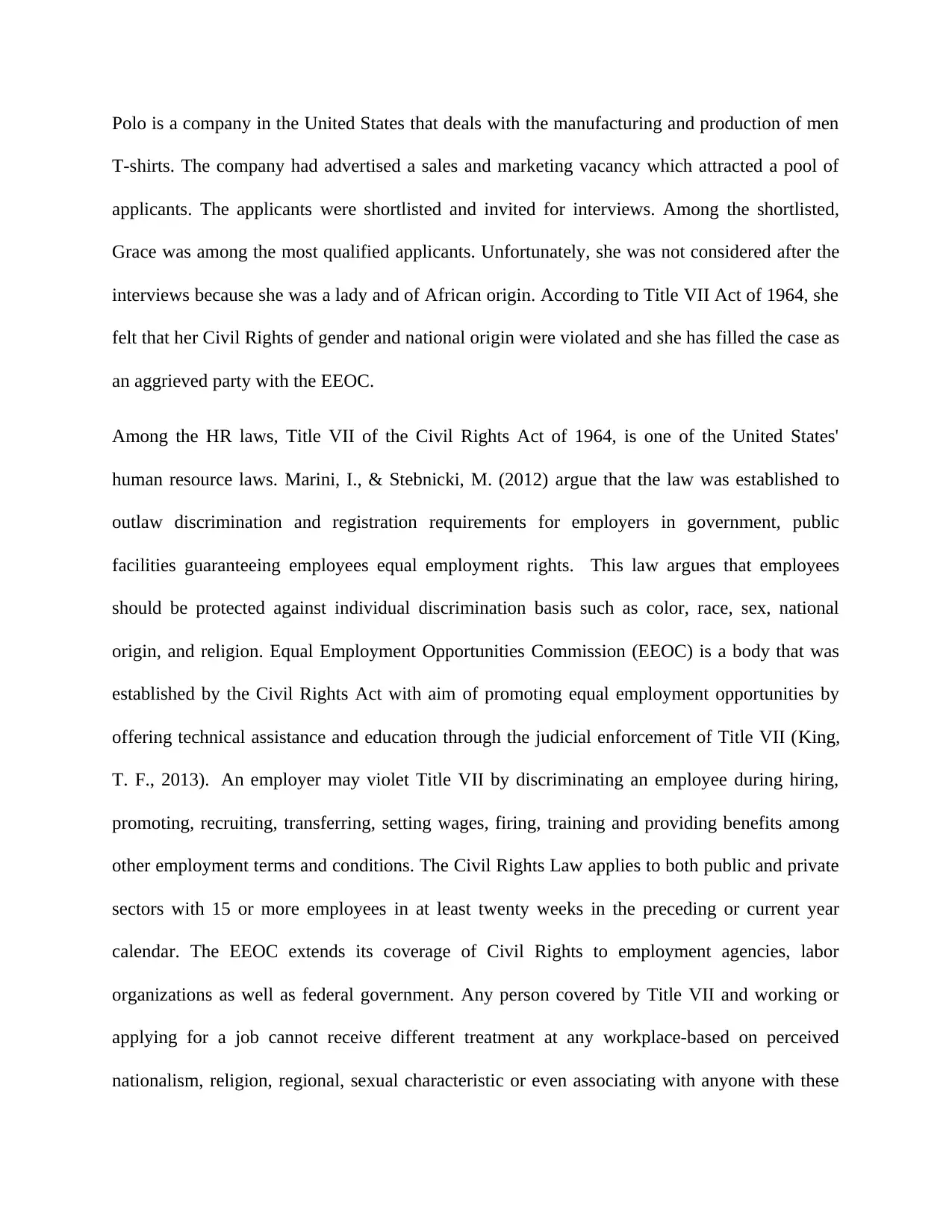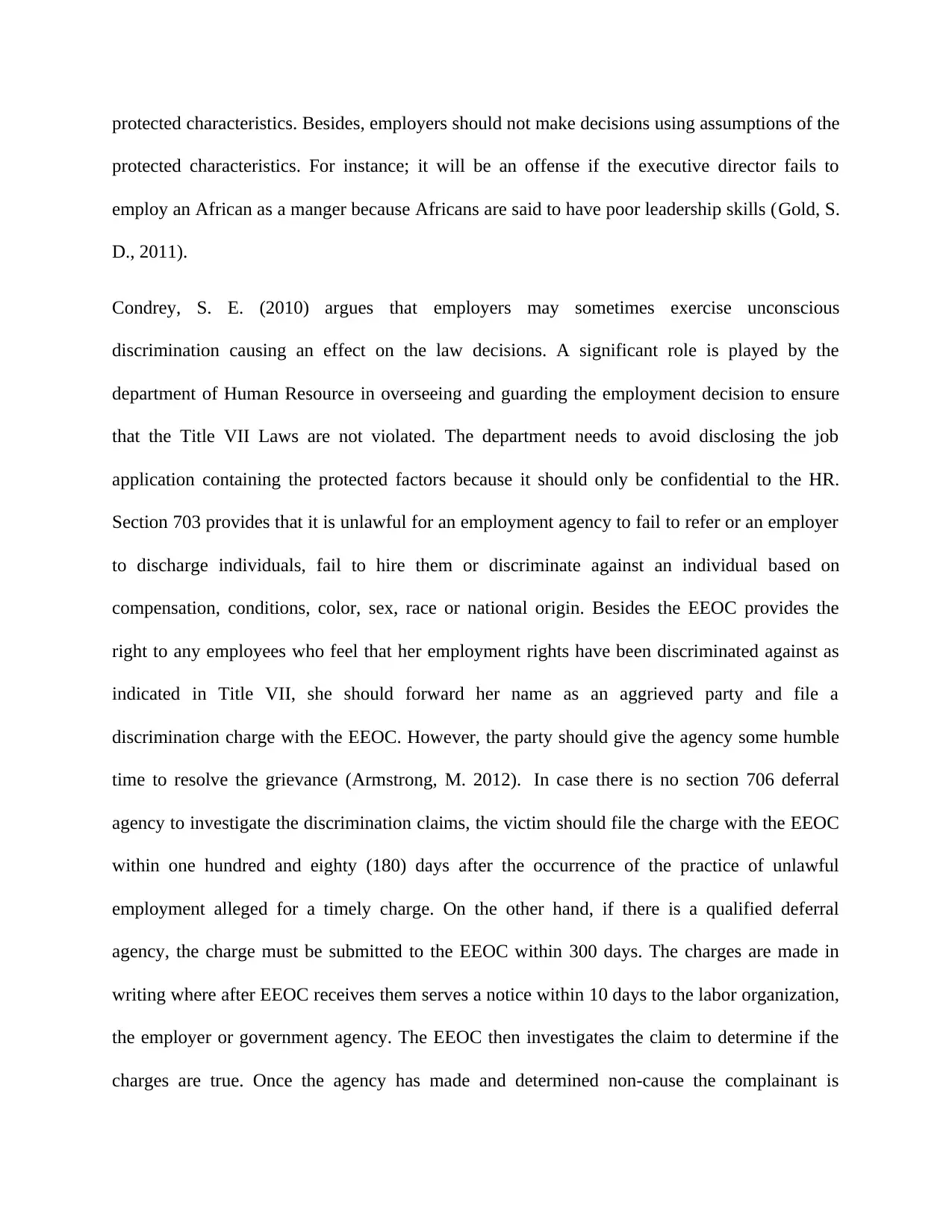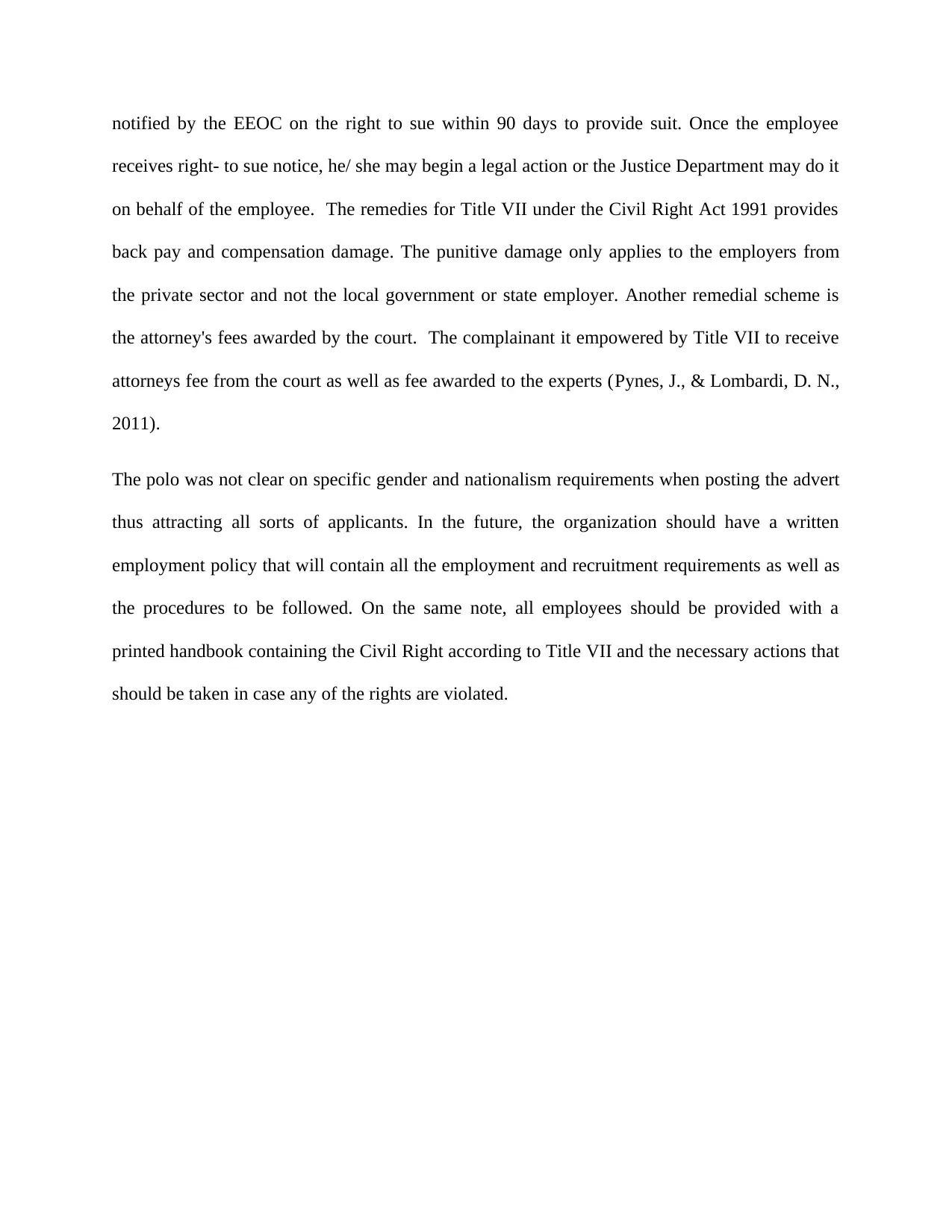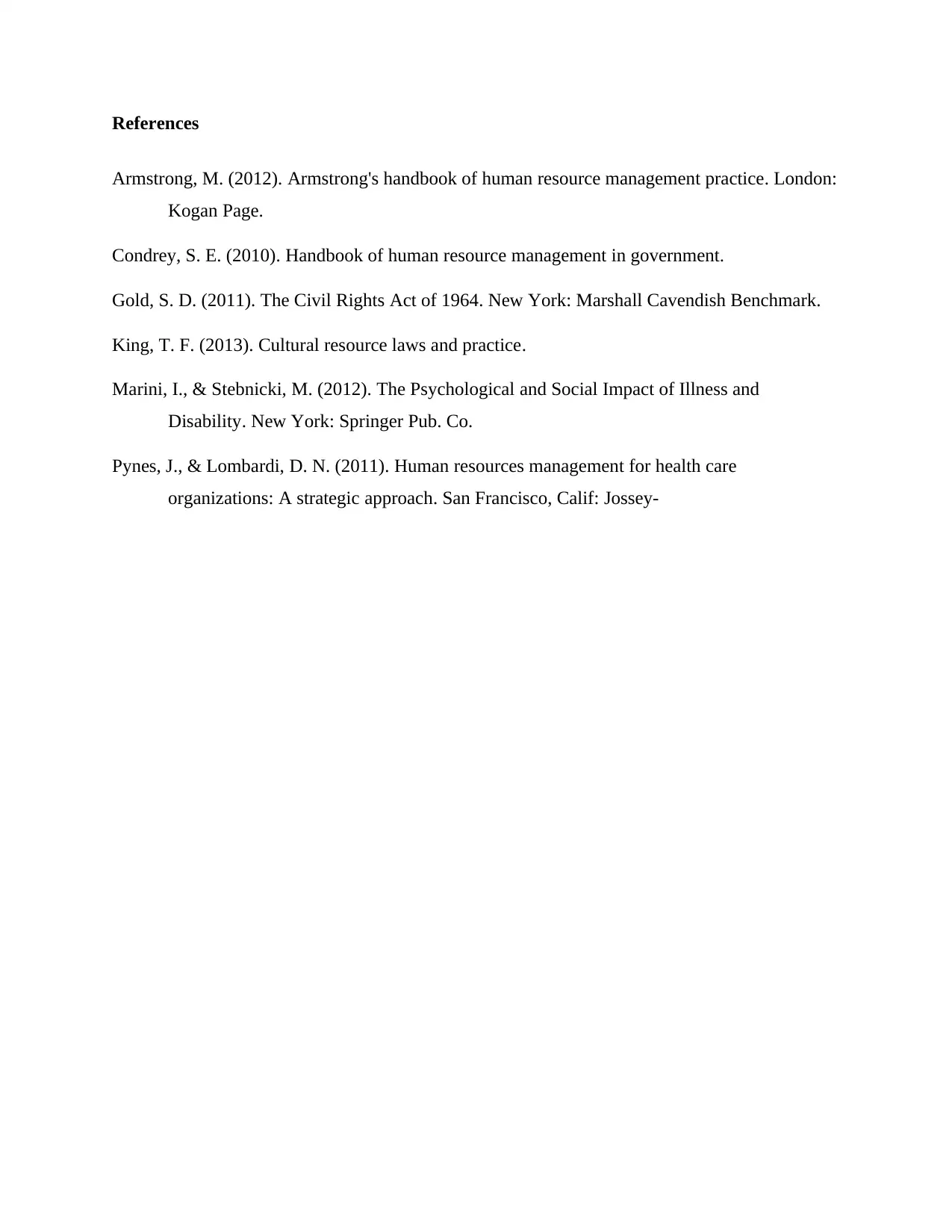HR Law Violation Report: Title VII of Civil Rights Act and EEOC
VerifiedAdded on 2022/09/22
|4
|1092
|22
Report
AI Summary
This report analyzes a case where Polo, a US-based company, was accused of violating Title VII of the Civil Rights Act of 1964. The company failed to hire Grace, a qualified applicant of African origin, due to her gender and national origin. The report examines the requirements of Title VII, which prohibits discrimination based on race, sex, and national origin, enforced by the EEOC. It highlights the company's violation in its hiring process, specifically its failure to adhere to the law's provisions regarding equal employment opportunities. The report recommends that Polo implement a written employment policy with clear recruitment requirements, provide employees with a handbook detailing Civil Rights and the necessary actions to take in case of violations, and ensure that the HR department avoids disclosing any job application with protected factors. The report emphasizes the importance of training to prevent unconscious discrimination, as well as the remedies available to aggrieved parties under Title VII, including back pay, compensation, and attorney's fees.
1 out of 4











![[object Object]](/_next/static/media/star-bottom.7253800d.svg)